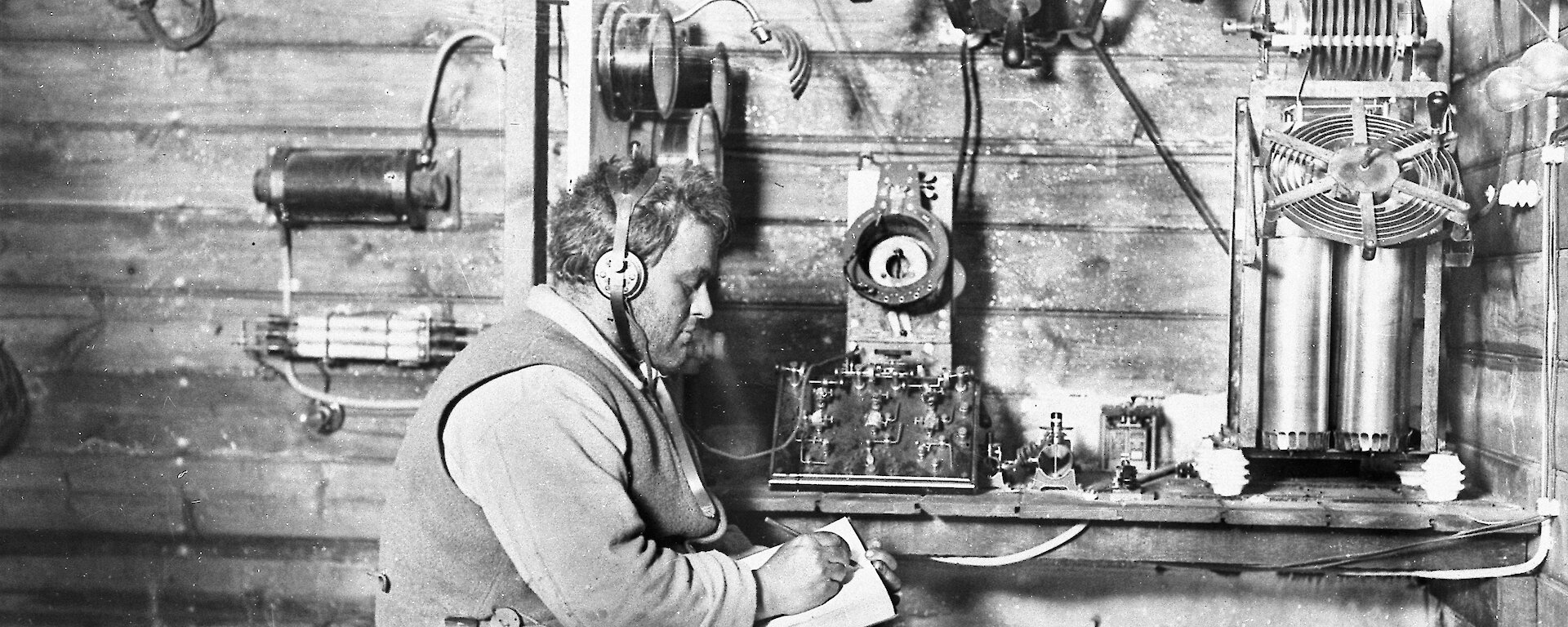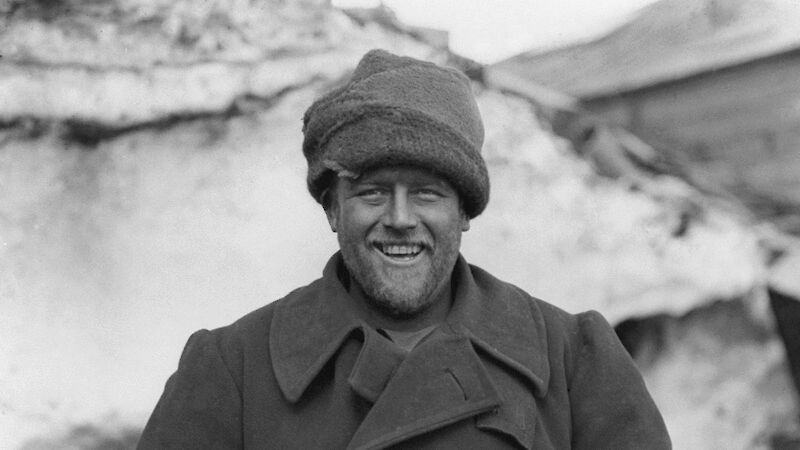Antarctic achievements
Though Walter Hannam is credited with being the first person to play football in Antarctica, his most significant contribution to Antarctic endeavours is as a pioneer of radio communications. Having gained a science diploma from the Sydney Technical College, Hannam was working in his father’s engineering business in 1911 when he applied for a position as wireless engineer on Mawson’s Australasian Antarctic Expedition (AAE).
By establishing a wireless telegraphic system for the AAE, Hannam made possible the first use of radio in Antarctica. Firstly, the equipment needed to set up the wireless relay station on sub-Antarctic Macquarie Island was moved from the ship to shore in barrels. Once the four radio masts were floated to shore, Hannam chose the best site for establishing the relay station. On 13 February 1912, the Macquarie Island station was able to communicate with ships around Australia and New Zealand.
Hannam continued on with the Main Base party to set up the first wireless station on the Antarctic continent at Commonwealth Bay. Using a Telefunken 1.5 kilowatt radio to transmit Morse code, Hannam received intermittent communications with the relay station at Macquarie Island. 25 September 1912 marks the first successful message transmission from Antarctica via Macquarie Island to Hobart. Hannam laid the foundation for Sidney Jeffryes, his successor as wireless operator in February 1913, who made adjustments to the system and established reliable two-way communications. The expedition was able to convey news of the tragic deaths of Belgrave Ninnis and Xavier Mertz, and Mawson’s amazing account of survival.
Awards and honours
In recognition of Hannam’s valuable contribution to the expedition, Mawson named a group of three islands in the eastern part of Commonwealth Bay after him. In 1914, Hannam also received the Polar Medal for his service on the expedition.
In his expedition diary, Hannam writes of being dirty for four days en-route from Macquarie Island to the Antarctic continent, and finally enjoying the opportunity to wash. In 1929, Hannam’s developed a patent, Improvements in rapid type electric water heaters for bath and other domestic service. The Hannam Hot Water Service, advertised in newspapers of the time, was a successful venture.
As a founding member of the Wireless Institute of Australia, Hannam continued his passion for radio communications. His call sign, well known among radio enthusiasts, was 2YH.
The Australian Antarctic Divisions’ Walter Hannam Building honours his achievements.



